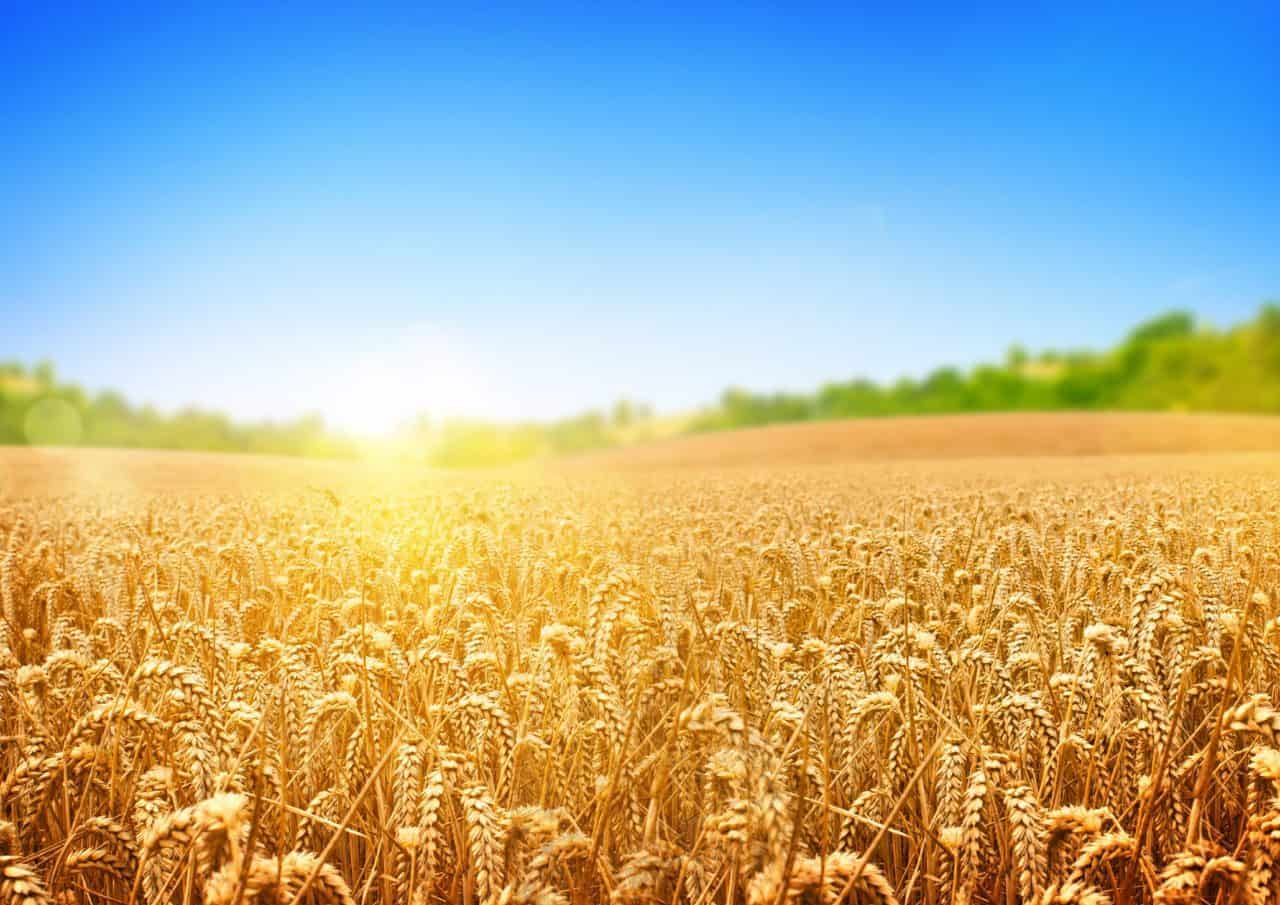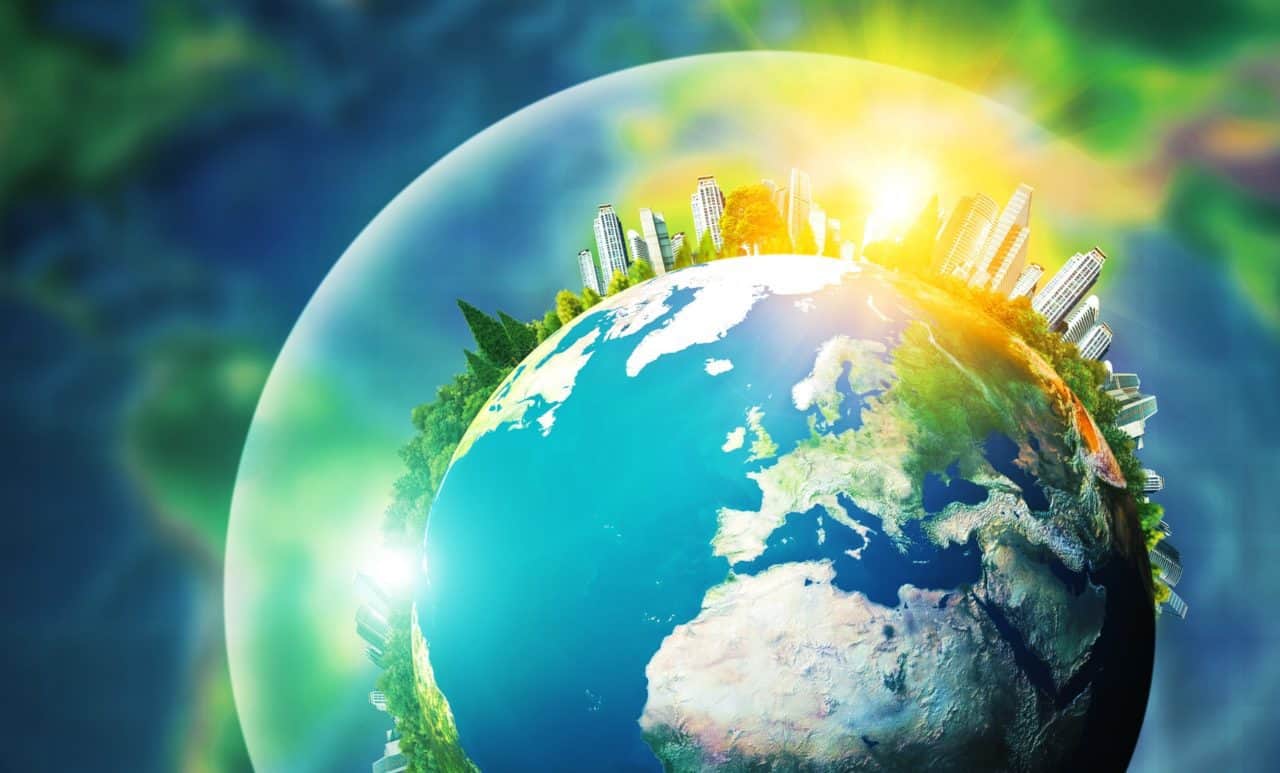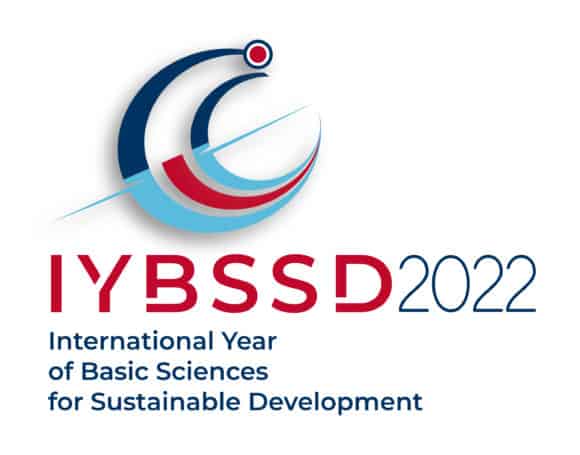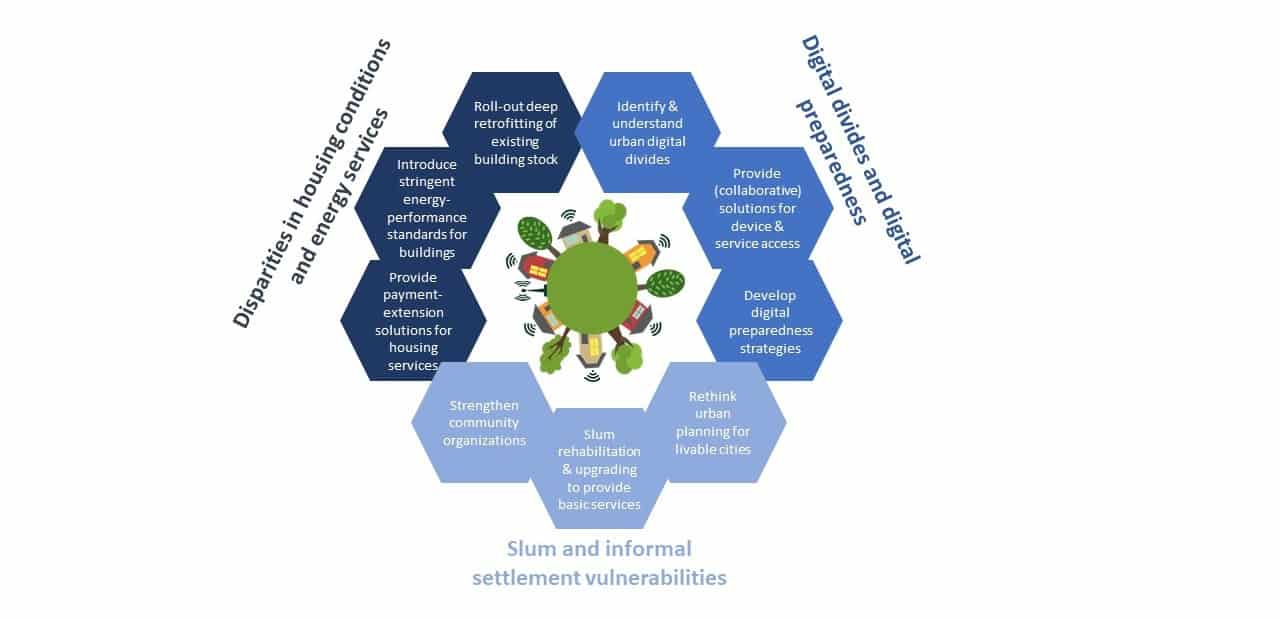Oct 18, 2021 | Climate, Climate Change, Energy & Climate, Poverty & Equity, Women in Science, Young Scientists
By Marina Andrijevic, researcher in the IIASA Energy, Climate, and Environment Program
Marina Andrijevic tackles some inconvenient but fundamental issues around climate change adaptation.

© Lio2012 | Dreamstime.com
Anyone who followed climate-related headlines this summer would have noticed a more than usual amount of talk on climate change adaptation. As it goes with sudden epiphanies in aftermaths of humanitarian disasters in our Western realities, this time we’ve come to realize that we need to seriously think about doing some adaptation.
To be fair, the realization that adaptation is inevitable has for a long time been somewhat of a taboo in the “woke” climate policy and activist circles (the author of this blog is a millennial and would like to acknowledge that the reader’s idea of a long time in climate policy might be different). Admitting that there might be no other option but to adapt to whatever the locked-in effects of climate change are, is arguably defeatist and gives in to the notion that mitigation alone won’t cut it.
While this might be yet another depressing but accurate reflection of the reality under climate change, portraying adaptation and mitigation as different but equally urgent actions could set a dangerous trap if it produces ideas such as: if we adapt enough, perhaps our economies and energy systems won’t need to change so much.
Even if it would be enough (which it wouldn’t), adaptation will not necessarily just happen once we recognize it needs to be done, because the needs and abilities for it operate on different time horizons and geographical scales. Many parts of the world that need adaptation will not necessarily be able to take action, so we have to be very careful when we count on it as a solution to climate change.
This is where we must tackle some inconvenient but fundamental issues about adaptation. Climate change research, especially the areas positioned at the “interface” with policy, could play a crucial role here. In this role, it must be very prudent and avoid doing a disservice to decision makers, and even worse, to people affected by those decisions. In other words, the scientific assessments need to be careful when assuming for whom, where, and how adaptation can reasonably be expected.
We tried to illustrate why this matters in our recent paper that looks at the capacity of populations to adapt to heat stress. We used air-conditioning as a popular, albeit not (yet) climate-friendly adaptation option. My coauthors and I understand that air conditioning could well be maladaptation, meaning that it causes more harm than good in the long-run. Adaptation practices, however, it turns out, are quite difficult to measure, while installed air conditioners can literally be counted, which makes them handy for plugging into our statistical models. We contend with access to air conditioning currently being a good enough example of access to adaptation and promise to assess more options in the future.
Our paper shows how the capacities to protect against heat stress vary widely around the world. Like with many other unjust manifestations of climate change, people in the world’s hottest areas also have the least means to adapt. We found that countries with more income, more urban areas, and less income inequality, are also the ones where more people have access to air conditioning.
This does not come as the world’s biggest revelation, but it conveniently allows us to make informed guesses on how access to air conditioning might change in 2050 or 2100. This is possible because the research community has already engaged in a group effort to propose five different futures with regard to GDP, urbanization, and income distribution (in climate jargon: the Shared Socioeconomic Pathways or SSPs).
Coupling the potential rates of air conditioning with the people exposed to heat stress based on projections of climate models, lets us calculate the cooling gap – the difference between people exposed to heat stress and people who can protect themselves against it with the use of air conditioning.
Depending on whether we find ourselves in the best- or the worst-case scenario of socioeconomic development could mean anywhere between two billion and five billion people globally unable to protect themselves against heat stress with air conditioning in 2050. This range only grows with longer time horizons, with Sub-Saharan Africa and South Asia being the areas of the world where these differences are the starkest.
We hope that our paper will motivate further investigations of potential gaps in adaptation that point to insufficient adaptive capacity and help to identify the areas and populations most at risk, as well as what additional work needs to be done in terms of socioeconomic improvements before we can reasonably expect adaptation to take place. Our findings on the importance of factors beyond just GDP, suggest that helping communities to build their adaptive capacity doesn’t mean only throwing money at them (although that would make for a decent start!), but international efforts must focus on issues such as eradicating inequalities, supporting smart urban development, strengthening institutions, and providing education.
So, let’s not take it for granted that we will all be able to adapt either now or in the future. Eliminating the causes of climate change must remain the number one policy objective that will help to reduce the need for adaptation in the first place. But number two could be helping communities that have no option but to cope with what’s already coming at them. Highlighting in our research what the implications of different adaptive capacities are for preservation of livelihoods, is a small step towards achieving this.
Reference:
Andrijevic, M., Byers, E., Mastrucci, A., Smits, J., & Fuss, S. (2021). Future cooling gap in shared socioeconomic pathways. Environmental Research Letters 16 (9) e094053. [pure.iiasa.ac.at/17411]
Note: This article gives the views of the author, and not the position of the Nexus blog, nor of the International Institute for Applied Systems Analysis.
Oct 6, 2021 | Food, Sustainable Development, Wellbeing
By Frank Sperling, Senior Project Manager in the Integrated Biosphere Futures Research Group of the IIASA Biodiversity and Natural Resources Program
Frank Sperling shares his reflections on issues around sustainable and transformational food production in the context of the UN Food Systems Summit.

© Solarseven | Dreamstime.com
Bringing together stakeholders from around the globe, the United Nations Food Systems Summit (UNFSS) calls attention to the opportunities, challenges, and promises that the transformation of our food systems can hold to advance sustainable development.
This transformation needs to happen, while the ongoing Covid-19 pandemic reminds us of the manifold vulnerabilities embedded in our food systems, the inter-dependence of our societies, and the entanglement of human and natural systems. The increases in weather and climate extremes that can clearly be attributed to climate change, ongoing biodiversity loss, environmental degradation, and pollution further illustrate that food systems need to manage a broad range of compounding risks and pressures that play out over different spatial and temporal scales. Advancing and securing gains towards the Sustainable Development Goals (SDGs) will not only require meeting multiple economic, social, and environmental objectives, but also demand pathways that ensure a safe navigation through a treacherous and shifting risk landscape. But how do we build resilience into the food system while transforming it at the same time?
Great strides have been made in technologies and practices that can help food systems manage existing and emerging risks. For example, on the production side, timely access to seasonal forecasts and early warning information coupled with extension services can help farmers to make the right decisions for planting and to anticipate, adapt, and cope with possible shocks. Precision agriculture, which harnesses advances in technology to ensure optimal health and productivity of crops and soils, can reduce the need for inputs. Diversification of livestock and agricultural traits can help farmers to reduce production risks in marginal environmental conditions.
Minimizing the spillover risk of zoonotic diseases, mitigating, and adapting to climatic and environmental changes place additional demands on food systems, but also offer new opportunities. Living sustainably requires comprehensively managing land use, enabling for food production, but maintaining and recovering critical ecosystem goods and services, such as carbon and biodiversity. It requires advancing nature-based solutions, where nature is seen as an ally and not an adversary in delivering on development objectives. Strengthening natural capital accounting and incentivizing environmental stewardship by rewarding actors in the food system for efficient and sustainable management of natural resources, and appropriately informing consumer choices will be important ingredients in reducing the environmental impact as well as environmental vulnerabilities of food systems.
The transformation of the food system is an ongoing process. It is therefore important to understand the impact of different changes across the system. Shifts to healthier diets can have important co-benefits in reducing pressure on the environment and natural resources. Such transformation implies, however, that shifts in demand are also matched by shifts in supply, reflecting appropriate adjustments of agricultural production. To accommodate such system shifts and facilitate system transitions over time, the social resilience and adaptive capacity of society must be addressed accordingly.
Food systems operate at different scales, ranging from local to global. Consequently, the role of trade in ensuring food security and human welfare across a range of contexts is critical. Several countries are already dependent on food imports. Trade can help the food security of regions where agricultural activities become less viable with progressive climate change. At the same time, the changing exposure to socioeconomic and environmental risks arising from the increasing inter-connectivity of societies and economies also need to be addressed, as illustrated by the current pandemic. The evolution of food systems has been largely shaped by a drive for efficiency. We must now consider carefully where efficiency needs to be (counter)balanced with an effort to promote greater diversity, and where we must build in greater redundancy to help manage the variety of risks facing food systems.
Forward-looking approaches aimed at transforming food systems towards greater resilience and sustainability will require a suite of measures within, as well as outside food systems. Such measures entail helping livelihoods and sectors to reduce their vulnerabilities and risk exposure, while also enabling the agility of food systems to manage future risks, avoiding lock-in of structures, which would become mal-adaptive over time. Achieving such transformation will depend on increased collaboration and trust building across sectors, enabling innovation in technologies and practice, strengthening of training and capacity development, and on the improvement of safety nets for reducing vulnerabilities to shocks and managing the social transition. Above and beyond, it requires re-calibrating the connection of food systems with other sectors and systems, such as health, environment, energy, and infrastructure.
The UNFSS in conjunction with the upcoming UN Climate Change Conference in Glasgow (UNFCCC COP26), and the UN Conference on Biological Diversity in Kunming (CBD COP15), are a formidable call to action for political leaders, decision makers in the public and private sectors, scientists, development practitioners, civil society, and to society at large, to come together and jointly imagine and build resilient and sustainable food systems that place people and nature at the center before it is too late.
This blog post was first published on the website of the International Science Council. Read the original article here.
Note: This article gives the views of the author, and not the position of the Nexus blog, nor of the International Institute for Applied Systems Analysis.
Jul 1, 2021 | Biodiversity, Climate Change, Ecosystems
By Florian Hofhansl, researcher in the Biodiversity, Ecology, and Conservation Research Group of the IIASA Biodiversity and Natural Resources Program
Florian Hofhansl writes about a successful paper on which he was the lead author that was recently ranked #32 on the list of the Top 100 most downloaded ecology papers published in 2020.
Early in 2020, one of my manuscripts titled “Climatic and edaphic controls over tropical forest diversity and vegetation carbon storage” was accepted for publication in the prestigious journal Nature Scientific Reports.
Initially, I was worried about the bad timing when I was informed that the paper would be published on 19 March – right at the onset of the COVID-19 pandemic – since it took me and my colleagues almost a decade to collect the data and publish our results on the biodiversity and functioning of tropical forest ecosystems.
 However, my worries completely disappeared when I learned that our research article had received more that 3,000 downloads, placing it among the top 100 downloaded ecology papers for Scientific Reports in 2020. This is an extraordinary achievement considering that Scientific Reports published more than 500 ecology papers in 2020. Seeing our paper positioned at #32 of the top 100 most downloaded articles in the field, therefore meant that our science was of real value to the research community.
However, my worries completely disappeared when I learned that our research article had received more that 3,000 downloads, placing it among the top 100 downloaded ecology papers for Scientific Reports in 2020. This is an extraordinary achievement considering that Scientific Reports published more than 500 ecology papers in 2020. Seeing our paper positioned at #32 of the top 100 most downloaded articles in the field, therefore meant that our science was of real value to the research community.
We kicked off our study in the dry-season of 2011 by selecting twenty one-hectare forest inventory plots at the beautiful Osa peninsula – one of the last remnants of continuous primary forest – located in southwestern Costa Rica. We did not expect that our project would receive this much scientific recognition as we were merely interested in describing the stunning biodiversity of this remote tropical region. Nevertheless, we were striving to understand the functioning of the area’s megadiverse ecosystem by conducting repeated measurements of forest characteristics, such as forest growth, tree mortality, and plant species composition.
After periodically revisiting the permanent inventory plots, and recording data for almost a decade, we found stark differences in the composition of tropical plant species such as trees, palms, and lianas across the landscape. Most interestingly, these different functional groups follow different strategies in their competition for light and nutrients, both limiting plant growth in the understory of a tropical rainforest. For instance, lianas – which are long-stemmed, woody vines – are relatively fast growing and try to reach the canopy to get to the sunlight, but they do not store as much carbon as a tree stem to reach the same height in the canopy. In contrast, palms share a different strategy and mostly stay in the lower sections of the forest where they collect water and nutrients with their bundles of palm leaves arranged upward to catch droplets and nutrients falling from above, thus reducing local resource limitation.

Lead author Florian Hofhansl and field botanist, Eduardo Chacon-Madrigal got stuck between roots of the walking palm (Socratea exorrhiza), while surveying one of the twenty one-hectare permanent inventory plots © Florian Hofhansl
Our results indicate that each plant functional group – that is, a collection of organisms (i.e., trees, palms, or lianas) that share the same characteristics – was associated with specific climate conditions and distinct soil properties across the landscape. Hence, this finding indicates that we would have to account for the small-scale heterogeneity of the landscape in order to understand future ecosystem responses to projected climate change, and thus to accurately predict associated tropical ecosystem services under future scenarios.
Our study and its subsequent uptake by the research community, illustrates the value of conducting on-site experiments that empower researchers to understand crucial ecosystem processes and applying these results in next-generation models. Research like this makes it possible for scientists to evaluate vegetation–atmosphere feedbacks and thus determine how much of man-made emissions will remain in the atmosphere and therefore might further heat up the climate system in the future.
Our multidisciplinary research project furthermore highlighted that it is crucial to gather knowledge from multiple disciplines, such as botany (identifying species), plant ecology (identifying functional strategies), and geology (identifying differences in parent material and soil types) – since all of these factors need to be considered in concert to capture the complexity of any given system, when aiming to understand the systematic response to climate change.
Read more about the research here: https://tropicalbio.me/blog
Reference:
Hofhansl F, Chacón-Madrigal E, Fuchslueger L, Jenking D, Morera A, Plutzar C, Silla F, Andersen K, et al. (2020). Climatic and edaphic controls over tropical forest diversity and vegetation carbon storage. Scientific Reports DOI: 10.1038/s41598-020-61868-5 [pure.iiasa.ac.at/16360]
Note: This article gives the views of the author, and not the position of the Nexus blog, nor of the International Institute for Applied Systems Analysis.
May 27, 2021 | Environment, IIASA Network, Sustainable Development
By Michel Spiro, President of the International Union of Pure and Applied Physics (IUPAP) and President of the Steering Committee for the proclamation of the International Year of Basic Sciences for Sustainable Development in 2022 (IYBSSD 2022)
A consortium of international scientific unions and scientific organizations’ plans to declare 2022 the International Year of Basic Sciences for Sustainable Development are underway. Michael Spiro makes the case for why the world needs this now more than at any time in the past.

© Dmytro Tolokonov | Dreamstime.com
For almost a year and a half now, the world has been disrupted by the COVID-19 pandemic caused by the SARS-CoV-2 virus. But how much worse could the situation have been without the progress and results produced for decades, even centuries, by curiosity-driven scientific research?
We deplore the many deaths due to COVID-19, and the future is still very uncertain, especially with the detection of new variants, some of which are spreading more quickly. But how could we have known that the infection was caused by a virus, what this virus looks like and what its genetic sequence and variations are without basic research?
Viruses were discovered at the beginning of the 20th century, thanks to the work of Frederick Twort, Félix d’Hérelle, and many others. The first electron microscope was built in the 1930s by Ernst Ruska and Max Knoll; and DNA sequencing began in the mid-1970s, notably with research by the groups of Frederick Sanger and Walter Gilbert.
Such a list could of course go on and on, with basic research at the root of countless tests, treatments, vaccines, and epidemiological modeling exercises. We even owe high-speed, long-distance communications, which allow us to coordinate the fight against the pandemic and reduce interruptions in education, economic activities, and even the practice of science, to the discovery and study of electromagnetic waves and optic fibers during the 19th century, and the development of algorithms and computers codes during the 20th century. The COVID-19 pandemic is a reminder (so harsh and brutal that we would have preferred to have been spared) of how much we rely on the continuous development of basic sciences for a balanced, sustainable, and inclusive development of the planet.
On many other issues, basic sciences have an important contribution to make to progress towards a sustainable world for all, as outlined in Agenda 2030 and its 17 Sustainable Development Goals, adopted in September 2015 by the United Nations General Assembly. They provide the essential means to address major challenges such as universal access to food, energy, and sanitation. They enable us to understand the impacts of the nearly eight billion people currently living on the planet, on the climate, life on Earth, and on aquatic environments, and to act to limit and reduce these impacts.
Indeed, unlike our use of natural resources, the development of the basic sciences is sustainable par excellence. From generation to generation, it builds up a reservoir of knowledge that subsequent generations can use to apply to the problems they will face, which we may not even know about today.
 The International Year of Basic Sciences for Sustainable Development (IYBSSD) will focus on these links between basic sciences and the Sustainable Development Goals. It is proposed to be organized in 2022 by a consortium of international scientific unions and scientific organizations* led by the International Union of Pure and Applied Physics (IIUPAP) with the recommendation of a resolution voted by the UNESCO General Conference during its 40th session in 2019. Over 50 national and international science academies and learned societies and around 30 Nobel Prize laureates and Fields Medalists also support this initiative. The Dominican Republic has agreed to propose a resolution for the promulgation of the IYBSSD during the 76th session of the United Nations General Assembly, beginning in September 2021.
The International Year of Basic Sciences for Sustainable Development (IYBSSD) will focus on these links between basic sciences and the Sustainable Development Goals. It is proposed to be organized in 2022 by a consortium of international scientific unions and scientific organizations* led by the International Union of Pure and Applied Physics (IIUPAP) with the recommendation of a resolution voted by the UNESCO General Conference during its 40th session in 2019. Over 50 national and international science academies and learned societies and around 30 Nobel Prize laureates and Fields Medalists also support this initiative. The Dominican Republic has agreed to propose a resolution for the promulgation of the IYBSSD during the 76th session of the United Nations General Assembly, beginning in September 2021.
We very much hope that scientists, and all people interested in basic science, will mobilize around the planet and take this opportunity to convince all stakeholders – the general public, teachers, company managers, and policymakers – that through a basic understanding of nature, inclusive (especially by empowering more women) and collaborative well-informed actions will be more effective for the global common interest. As IIASA is one of the consortium’s founding partners, we especially invite all IIASA scientists, alumni, and colleagues they are collaborating with to create or join national IYBSSD 2022 committees to organize events and activities during this international year.
More information, as well as communication material, can be found at www.iybssd2022.org. This will also be shared through social media accounts (look for @iybssd2022 on Facebook, Twitter, LinkedIn and Instagram). You are also invited to subscribe to the Newsletter here.
* Consortium members
The International Union of Crystallography (IUCr); the International Mineralogical Association (IMA); the International Mathematical Union (IMU); the International Union of Biological Sciences (IUBS); the International Union of Geodesy and Geophysics (IUGG); the International Union of Pure and Applied Chemistry (IUPAC); the International Union of History and Philosophy of Science and Technology (IUHPST); the International Union of Materials Research Societies (IUMRS); the International Union for Vacuum Science, Technique, and Applications (IUVSTA); the European Organization for Nuclear Research (CERN); the French Research Institute for Development (IRD); the International Institute for Applied Systems Analysis (IIASA); the European Physical Society (EPS); the Joint Institute for Nuclear Research (JINR); the Nuclear Physics European Collaboration Committee (NuPECC); the International Centre for Theoretical Physics (ICTP); the International Science Council (ISC); Rencontres du Vietnam; the Scientific Committee on Oceanic Research (SCOR); the Square Kilometre Array Organization (SKAO); and SESAME (Synchrotron-light for Experimental Science and Applications in the Middle East).
Note: This article gives the views of the author, and not the position of the Nexus blog, nor of the International Institute for Applied Systems Analysis.
May 20, 2021 | COVID19, Poverty & Equity, Risk and resilience, Women in Science
By Benigna Boza-Kiss, Shonali Pachauri, and Caroline Zimm from the IIASA Transformative Institutional and Social Solutions Research Group
Benigna Boza-Kiss, Shonali Pachauri, and Caroline Zimm explain how COVID-19 has impacted the poor in cities and what can be done to increase the future resilience of vulnerable populations.

© Manoej Paateel | Dreamstime.com
The COVID-19 pandemic has brought a halt to life as we knew it. We have been restrained in our activities and freedoms, forced to stay indoors at home, to cancel travel plans, and to transfer meetings to an online space, where most of us have also celebrated birthdays and other important life events that should have been in person with our loved ones. These changes have impacted many aspects of our comfort, our social wellbeing, as well as our financial situations, but it has also brought existing inequalities and poverty into the spotlight.
The risks of the pandemic and restrictions following containment measures have been felt most acutely by the poor, the vulnerable, those in the informal sector, and those without savings and safety nets. The suffering of women in the health sector, school children in households without electricity and internet, workers in the informal sector that don’t have the option to telework, crowds living in slums – to name just a few examples of vulnerable groups – have become glaringly visible to all. These people have had to adapt to new rules and conditions when they were living on the edge even before the pandemic.
In a new perspective piece published in the journal Frontiers in Sustainable Cities, we explored how aspects related to access to shelter/housing, modern energy, and digital services in cities have influenced the poor and what can be done to increase the future resilience of vulnerable populations.
We described three ways in which the COVID-19 pandemic and related containment measures have exacerbated urban inequalities, and identified how subsequent recovery measures and policy responses could redress these.
First, lockdowns amplified urban energy poverty. Staying at home has meant increased energy use at home. For the poor, who already struggle with utility costs, and typically live in low energy quality buildings, these services have become even more unaffordable. These populations also shoulder a higher burden of poor health, for example, higher incidence of respiratory problems, with poor or inadequate ventilation and insulation increasing their risk of infection even more.
Second, preexisting digital divides have surfaced, even within well-connected cities. Multiple barriers limit digital inclusion: access to digital technologies due to high costs (for devices, internet access, and electricity connections), and unreliable services (again both for electricity and internet), as well as low digital literacy and support. This lack of adequate digital service access is contributing to these populations falling further behind during lockdowns as they miss out on education and income.
Third, slum dwellers in the world’s cities have been particularly hard hit, because of precarious and overcrowded housing conditions, lack of basic infrastructure and amenities, and a high concentration of the socioeconomically disadvantaged, resulting in even more negative consequences of lockdown measures. With many slum inhabitants working in the informal sector, many have been left either without jobs and income, or have been compelled to work in precarious and unsafe conditions to survive. The loss of income has also had knock-on effects, making payments of regular expenditures for rent, water, electricity, and other utility services difficult. Women within these settlements have been disproportionately impacted by the pandemic, as they are over represented in the informal economy, and more likely to be engaged in invisible work, such as home-based or domestic and care work.
Recovery measures need to ensure immediate relief, but also point towards long-term solutions that contribute to the redistribution of wealth and new urban development, while also increasing resilience to the current and future pandemics or other disasters. There are tested measures that should be reemphasized.
Urban green recovery plans that include large-scale home renovation programs could ensure warm, healthy homes, and affordable energy bills for all. In the shorter-term, alleviation of payment defaults on the rents and utility bills of the energy poor should continue. In parallel, urban digital preparedness, more equal access to the virtual delivery of essential services, and provision of opportunities for virtual working and education for all in the future, need attention.
COVID-19 can be a wake up call to increase efforts to close the digital divide and push for structural change. The crisis has increased the urgency to redesign and improve informal settlements and provide adequate and efficient services that address the diverse needs of poor urban residents. This requires partnerships between urban municipalities, planners, and stakeholders, as well as strengthening local communities for inclusive planning strategies. More immediately, it is necessary to provide direct support to slum and informal settlement populations in terms of income support, adequate nutrition, energy, water, and other basic infrastructure and services.
 All in all, the COVID-19 pandemic has been a “test of societies, of governments, of communities, and of individuals”. Digital technologies, home renovation, and slum rehabilitation are the means, rather than the end to improve conditions for all, but if specifically targeted to the poor and most deprived, such measures can reduce inequalities and increase resilience.
All in all, the COVID-19 pandemic has been a “test of societies, of governments, of communities, and of individuals”. Digital technologies, home renovation, and slum rehabilitation are the means, rather than the end to improve conditions for all, but if specifically targeted to the poor and most deprived, such measures can reduce inequalities and increase resilience.
Reference:
Boza-Kiss, B., Pachauri, S., & Zimm, C. (2021). Deprivations and Inequities in Cities Viewed Through a Pandemic Lens. Frontiers in Sustainable Cities 3 e645914. [pure.iiasa.ac.at/17121]
Note: This article gives the views of the author, and not the position of the Nexus blog, nor of the International Institute for Applied Systems Analysis.









You must be logged in to post a comment.